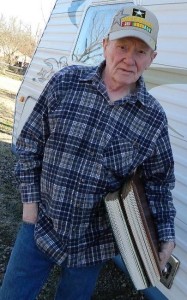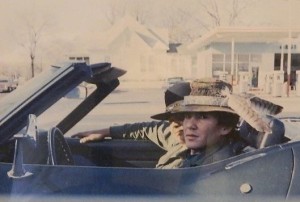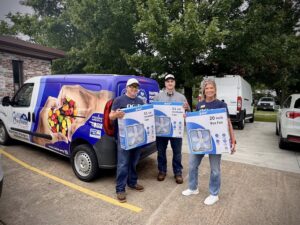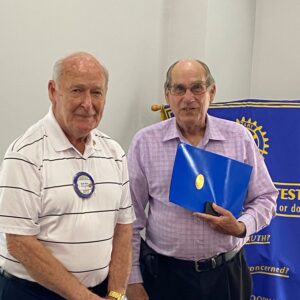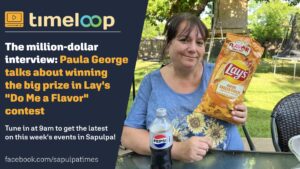Anyone who has seen the 1973 hit movie “American Graffiti” has a glimpse of what was happening in Sapulpa (and other towns across the country) in the late 1950s and early 1960s.
Graduates of Sapulpa High School’s Class of 1962 and other teens lived it. Some still do—at least in memory.
That year is the same as the setting in George Lucas’ movie. The town of course was in California where Lucas also was then a teenager.
Sapulpa classmates John Berryhill and Karl Soliday may have known little about what was happening in California, but they can take you back to that era in a matter of minutes with picture and music—even giving you a ride along Sapulpa’s cruise route.
They and other locals caught up in the cruising and rock and roll culture so popular among the post-World War II baby boomer generation, can point out the drive-ins and hot spots that dotted their favorite route. Some of the cruising took place on a section of famed Route 66 from the north then west through historic downtown before turning south and draggin’ Main.
Volume on their AM radios was turned up as loud as possible to pump out Buddy Holley, Big Bopper, Fats Domino, Jerry Lee and the Everly Brothers. They may stop along the way and socialize with other cruisers and show off the latest thing they had done to their cars. It was about chrome [or no chrome], paint, hubcaps, tires . . . about racking pipes and popping clutches.
All of that but to simply turn around at Cornwells Drive-in on South Main and do it all over again.
Berryhill, who has albums and albums of photographs which he has taken since childhood, also has those days etched in his mind.
Taking pictures and capturing an ever-changing local landscape has been a passion of his only superceded by the nights of cruising and drag racing. Those drag races that would conclude a night of cruising with quick-run matchups on Slick Road, of course were illegal. If local Highway Patrolman Jack McKenzie didn’t catch you in the act, he may “pull you over later and want to know why you had your slicks on the rear and your header caps loose or rattling.”
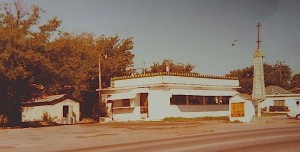
For Berryhill the cruise route would start at the Beacon Drive-In near the northwest corner of Jackson and Mission [Rte. 66]. Carl’s Pig Stand was just across the street where the big car wash is today directly north of Happy Burger [the old Tastee Freeze]. Others on both sides of the year 1962 liked Rylie’s Root Beer Stand a little further north at Jones and Mission to meet up and cruise.
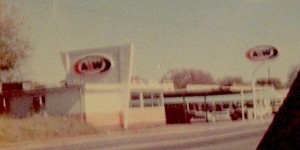
Berryhill remembers The Beacon as his start point. All or in part, those drive-ins featured curb hops, trays on your windows with burgers, fries, shakes. People will remember others—The Big Dipper, The Sapulpan, Dairy Queen.
Places like Diamond Truck Stop and Cornwells were somewhat more sophisticated and catered to other crowds. Whimpy’s and Liberty Cafe were sit-down places.
What the kids liked were those spots with other kids, their music and their cars. Most had their favorite gas stations as well. All—girls and boys—liked the flirting and showing off of their cars, dress and cool hairstyles.
Friday nights were good times to find a girl to ride around with you—maybe take her skating or to an area drive-in show at Tulsa’s Bellaire or Admiral Twin. Berryhill said he wasn’t that keen on Sapulpa’s Tee-Pee Drive-in because of the mosquitos. (Mosquitos would be an issue a couple of years later in a place far from Sapulpa).
On Saturday night, probably between 8 and 9 p.m., after a day of cruising and shining up his hot rod, Berryhill and as many as 20 other cars would file out of the Beacon’s parking lot south onto the cruise route. Others along the way would join and follow. Drag challenges had been made or soon would be as a location was announced. If the cars drove through Kiefer, teens there also would join the procession.
“I really liked the drag racing part,” Berryhill said.
If not just outside of town following a challenge while cruising, at the drag strip in Tulsa.
Berryhill maintained his car and related hobbies with various odd jobs. After high school he was employed at Frankoma Pottery and was working there when drafted into the U.S. Army in 1965. He served in Vietnam 1966-67 and returned to Frankoma when he came home.
Before going into the service, Berryhill had bought his dream car—a 1958 Corvette. He had his mother sell the car while he was in the service, but once home would get his second vet.
Today he favors old Chevy IIs and has several of them he drives. You can see them and him oftens at the Thursday night Cruise-Ins at Braums.
Berryhill grew up on Lindon Street with two older sisters and a younger brother.
He was married for a while. Today he is retired after 31 years as a railroader with BNSF (Burlington Northern/Santa Fe) formerly Frisco Railroad. He was switchman, brakeman, conductor and foreman of the Tulsa yard.
[panel style=”panel-info”]
[panel-content]
American Graffiti is a 1973 American coming of age comedy-drama film directed and co-written by George Lucas starring Richard Dreyfuss, Ron Howard, Paul Le Mat, Harrison Ford, Charles Martin Smith, Cindy Williams, Candy Clark, Mackenzie Phillips and Wolfman Jack. Suzanne Somers has a cameo. Set in Modesto, California in 1962, the film is a study of the cruising and rock and roll cultures popular among the post–World War II baby boomer generation. The film is told in a series of vignettes, telling the story of a group of teenagers and their adventures over a single evening. The genesis of American Graffiti was in Lucas’ own teenage years in early 1960s.
[/panel-content]
[/panel]


